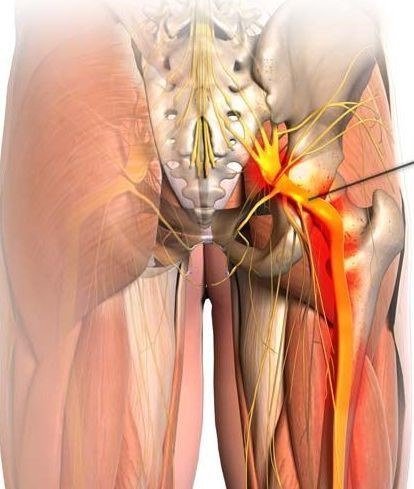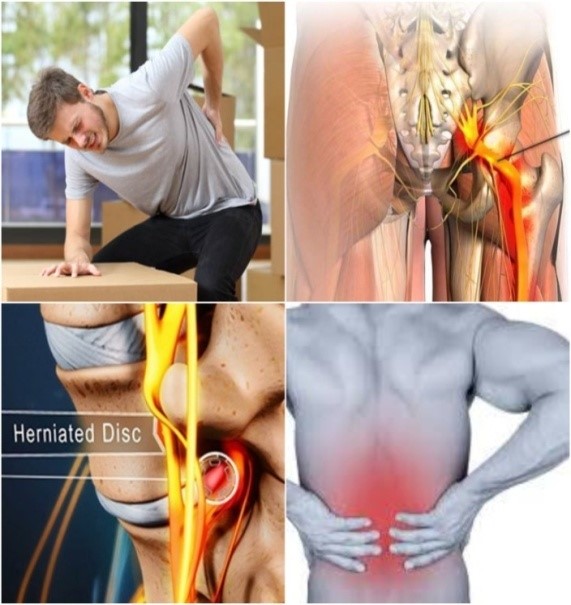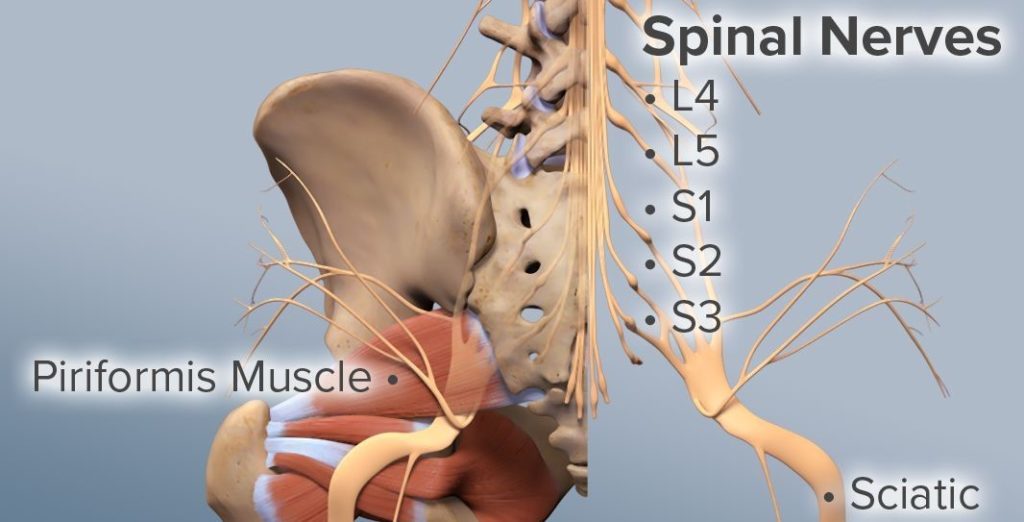- GET CORRECTLY DIAGNOSED NOW - WORLD CLASS EMG TESTING
- 312-877-0035
EMG Best Test To Diagnose Sciatica
Best Test for Sciatica is the EMG/NCV Nerve Test
Exams and Tests for Sciatica

How Your Doctor Properly Diagnoses Sciatic Nerve Pain
To diagnose sciatica correctly and develop a list of possible causes, an EMG/NCV (Electromyography/Nerve Conduction Velocity Study) is required. MRI/CT scan can show disc bulges or herniations but may not always correspond to your pain pattern. You may have an x-ray or a computed tomography (CT or CAT) scan. If your doctor thinks it's possible you have a herniated disc or spinal stenosis that's causing your sciatica, your doctor may order a magnetic resonance imaging (MRI) test.
Together, all these various exams and tests, with the EMG Testing the most specific and accurate test, will give your doctor a more complete picture of your sciatic nerve pain or “pinched nerve”. Using this information, he or she will be able to make the best, accurate diagnosis of the underlying cause of your sciatica. Often this test is ordered very late in the patients condition and symptom history, this a mistake. The test should be ordered after 1 month of symptoms of numbness, tingling, weakness in the leg or foot, persistent referred pain from the back to the hip or leg or overall history of leg and or back pain for over 3 months with no relief from other therapies.

In the physical exam, and neurological exam your doctor will observe your posture, range of motion, and physical condition, noting any movement that causes you pain. Your doctor will feel your spine, note its curvature and alignment, and feel for muscle spasm, test your reflexes, muscle strength, and other nerve changes.
Frequent symptoms of "Sciatica" are:
- Chronic Low Back Pain that has been present for many months/years.
- Low Back Pain, burning, aching or sharp/jabbing that refers to your gluteal region, if worse is now shooting down your leg.
- Weakness in thigh or hip leg or foot muscles. Most frequently your hip flexor (brings your knee up).
- Shooting pain down one or both of your legs, or if you've been experiencing weakness or tingling down one or both of your legs.
- Leg fatigue/tiredness after walking/climbing more than you think is.
Pathways to Sciatic Nerve Pain
Many sets of paired nerve roots in the lumbar spine combine to create the sciatic nerve. Starting at the back of the pelvis (sacrum), the sciatic nerve runs from the back, under the buttock, and downward through the hip area into each leg. Nerve roots are not "solitary" structures but are part of the body's entire nervous system capable of transmitting pain and sensation to other parts of the body. Radiculopathy occurs when compression of a nerve root from a disc rupture (herniated disc) or bone spur (osteophyte) occurs in the lumbar spine prior to it joining the sciatic nerve. The sciatic nerve runs from the back, under the buttock, and downward through the hip area into each leg.
What Causes Sciatic Nerve Compression?
Several spinal disorders can cause spinal nerve compression and sciatica or lumbar radiculopathy.
The 6 most common are:
• a bulging or herniated disc
• lumbar spinal stenosis
• spondylolisthesis
• trauma
• piriformis syndrome
• spinal tumors

COMMON SCIATICA CAUSES
Common Sciatica Cause #1: Lumbar Bulging Disc or Herniated Disc
A bulging disc is also known as a contained disc disorder. This means the gel-like center (nucleus pulposus) remains "contained" within the tire-like outer wall (annulus fibrosus) of the disc.
A herniated disc occurs when the nucleus breaks through the annulus fibrosus. It is called a "non-contained" disc disorder. Whether a disc bulges or herniates, disc material can press against an adjacent nerve root and compress delicate nerve tissue and cause sciatica.
The consequences of a herniated disc are worse. Not only does the herniated disc cause direct compression of the nerve root against the interior of the bony spinal canal, but the disc material itself also contains an acidic, chemical irritant (hyaluronic acid) that causes nerve inflammation. In both cases, nerve compression and irritation cause inflammation and pain, often leading to extremity numbness, tingling, and muscle weakness.
Common Sciatica Cause #2: Lumbar Spinal Stenosis
Spinal stenosis is a nerve compression disorder most often affecting older adults. Leg pain similar to sciatica may occur as a result of lumbar spinal stenosis. The pain is usually positional, often brought on by activities such as standing or walking and relieved by sitting down.
Spinal nerve roots branch outward from the spinal cord through passageways called neural foramina comprised of bone and ligaments. Between each set of vertebral bodies, located on the left and right sides, is a foramen. Nerve roots pass through these openings and extend outward beyond the spinal column to innervate other parts of the body. When these passageways become narrow or clogged causing nerve compression, the term foraminal stenosis is used.
Common Sciatica Cause #3: Spondylolisthesis
Spondylolisthesis is a disorder that most often affects the lumbar spine. It is characterized by one vertebra slipping forward over an adjacent vertebra. When a vertebra slips and is displaced, spinal nerve root compression occurs and often causes sciatic leg pain.
Common Sciatica Cause #4: Trauma
Sciatica can result from direct nerve compression caused by external forces to the lumbar or sacral spinal nerve roots. Examples include motor vehicle accidents, falling down, football and other sports. The impact may injure the nerves or, occasionally, fragments of broken bone may compress the nerves.
Common Sciatica Cause #5: Piriformis Syndrome
Piriformis syndrome is named for the piriformis muscle and the pain caused when the muscle irritates the sciatic nerve. The piriformis muscle is located in the lower part of the spine, connects to the thighbone, and assists in hip rotation. The sciatic nerve runs beneath the piriformis muscle. Piriformis syndrome develops when muscle spasms develop in the piriformis muscle thereby compressing the sciatic nerve. It may be difficult to diagnose and treat due to the lack of x-ray or magnetic resonance imaging (MRI) findings.
Common Sciatica Cause #6: Spinal Tumors
Spinal tumors are abnormal growths that are either benign or cancerous (malignant). Fortunately, spinal tumors are rare. However, when a spinal tumor develops in the lumbar region, there is a risk for sciatica to develop as a result of nerve compression.
If you think you have sciatica, call us. One of our Doctors will perform a Pre-EMG Consultation and EMG testing. The first step toward relieving pain is a proper diagnosis. Do not wait any longer to schedule your EMG Test, you are prolonging your condition, delaying correct and accurate diagnosis and allowing scar tissue to build up. If you have an undiagnosed disc herniation further trauma to the disc can cause more permanent disability if the nerve compression is goes undiagnosed.
GET RELIEF FROM SCIATICA NOW
(312) 877-0035
Fast & Convenient
Expert EMG Neurological Diagnostic Tests - Same Day Testing Available! We ALSO Document work & Personal Injuries for legal cases as well. We have FOUR locations to serve you.
